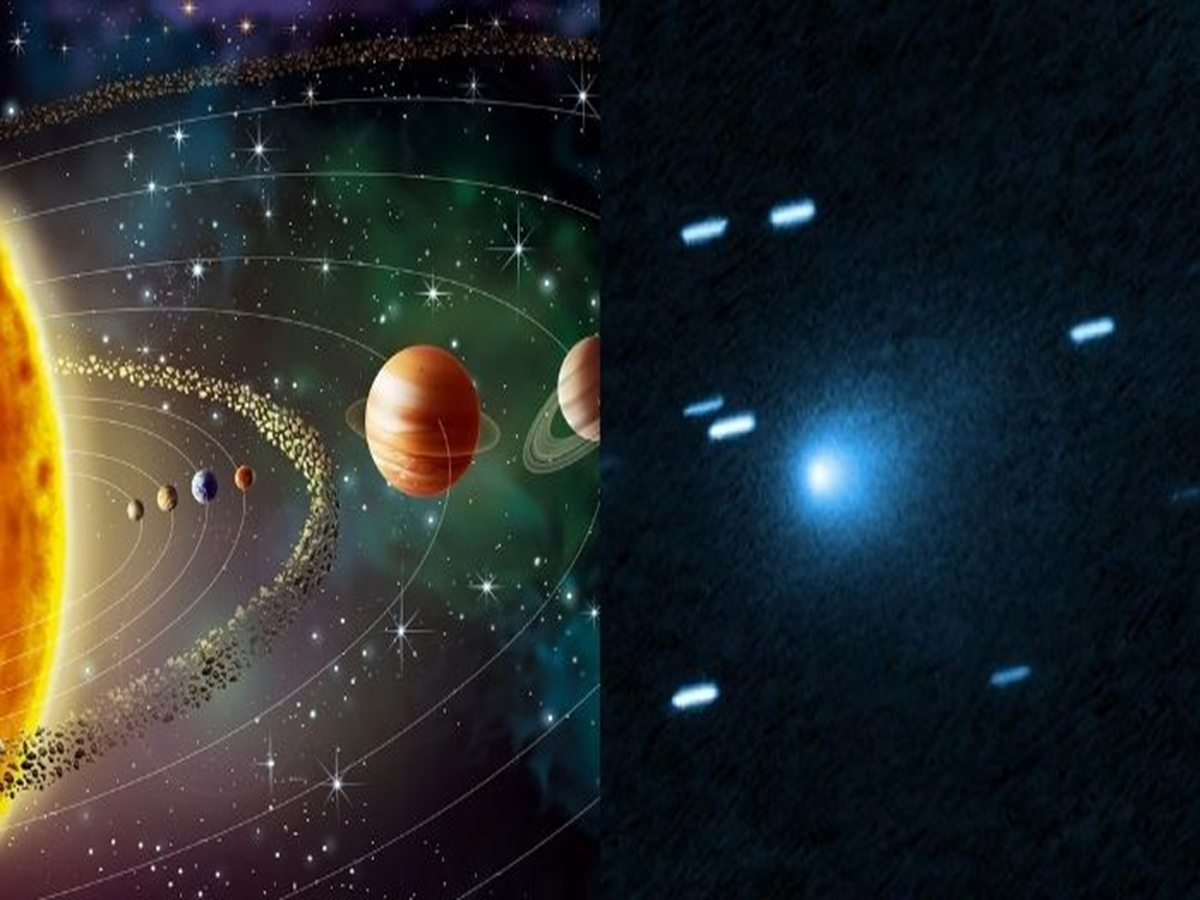Interstellar Comet 3I/ATLAS Sparks Scientific Debate and Speculation of Alien Origins
A mysterious object from another star system is currently racing through our solar system, captivating astronomers worldwide and prompting provocative questions about its true nature. Designated 3I/ATLAS (C/2025 N1), this interstellar visitor represents only the third confirmed object from beyond our solar system ever observed, following the discoveries of ‘Oumuamua in 2017 and 2I/Borisov in 2019.
Discovered on July 1, 2025, by the ATLAS (Asteroid Terrestrial-impact Last Alert System) survey telescope in Rio Hurtado, Chile, this faint, fast-moving object has ignited both scientific curiosity and public imagination. While most astronomers classify it as a natural comet, one prominent Harvard scientist has raised the possibility that its unusual characteristics might indicate something far more extraordinary: evidence of alien technology.
The Journey of an Interstellar Wanderer
The interstellar comet 3I ATLAS derives its name from its unique status: “3” for the third interstellar object discovered, “I” for interstellar, and “ATLAS” for the telescope network that first detected its presence. What makes this object extraordinary is its undeniable extrasolar origin – its speed and trajectory demonstrate that it is not gravitationally bound to our Sun, meaning it must have formed around another star before wandering into our cosmic neighborhood by chance.
“It’s going to kind of cruise through the inner solar system – in between Mars and Earth’s orbit – and then it will fly past the sun,” explained Con Stoitsis, comet and meteor director at the Astronomical Society of Victoria. “This one is on what we call a hyperbolic orbit. So it’s not gravitationally bound to the sun. It’s travelling much too fast, and so it will just fly out the other side of the solar system.”
According to astronomical data, interstellar comet 3I ATLAS is traveling at astonishing speeds exceeding 200,000 km/h (approximately 61 km per second), with its velocity increasing as it approaches the Sun’s gravitational influence. The object reached its closest approach to the Sun – known as perihelion – on October 29, 2025, coming within 1.4 astronomical units (about 130 million miles), just inside Mars’ orbit. NASA confirms the closest approach to Earth will be approximately 270 million kilometers, posing no threat to our planet.
The trajectory of interstellar comet 3I ATLAS has revealed several intriguing characteristics that have caught the attention of scientists. Its path aligns within 5 degrees with the ecliptic plane of the planets around the Sun, a configuration with only a 0.2 percent likelihood of occurring by chance. Additionally, its arrival timing was remarkably fine-tuned to bring it within tens of millions of kilometers from Mars, Venus, and Jupiter while remaining unobservable from Earth at perihelion – an alignment with a mere 0.005 percent probability.
The Alien Technology Hypothesis
While the scientific consensus maintains that interstellar comet 3I ATLAS is a natural comet, Professor Avi Loeb, a theoretical astrophysicist at Harvard University, has advocated for considering more extraordinary possibilities. Through the Galileo Project, his initiative to investigate potential evidence of extraterrestrial technology, Loeb has published a series of scientific essays questioning whether the object might represent an artificial probe or artifact from an alien civilization.
“The hypothesis in question is that the recent interstellar visitor to our Solar System, 3I/ATLAS, is a technological artefact, and furthermore has active intelligence. If this is the case, then two possibilities follow: first, that its intentions are entirely benign, and second, they are malign, or somewhere in between,” Loeb wrote in a paper titled “Is the interstellar object 3I/ATLAS alien technology?” He added, “The consequences, should the hypothesis turn out to be correct, could potentially be dire for humanity, and would possibly require defensive measures.”
Loeb has pointed to several unusual characteristics that distinguish interstellar comet 3I ATLAS from typical comets. In an essay titled “Does 3I/ATLAS Generate Its Own Light?”, he questioned whether its brightness might stem from self-luminosity rather than reflected sunlight – a property unlike any known comet. He also noted that during July and August 2025, it displayed a sunward jet (anti-tail) that appears to be a physical phenomenon rather than an optical illusion from geometric perspective, unlike familiar comets.
The perihelion passage on October 29 represented what Loeb calls the “acid test” for determining the object’s true nature. For ongoing coverage of this developing scientific story, follow our Africanews Desk for regular updates.
“If it is a natural comet glued together by weak forces, its heating by 770 watts per square meter may break it up into fragments which evaporate more quickly as a result of their large surface area per unit mass,” Loeb explained to Newsweek. “The resulting fireworks might generate a much brighter cometary plume of gas and dust around it. However, if 3I/ATLAS was technologically manufactured, it might maneuver or release mini-probes. Other technological signatures include artificial lights or excess heat from an engine.”
NASA has firmly rejected Loeb’s extraordinary claims, maintaining that the object exhibits characteristics consistent with a natural comet. “It looks like a comet. It does comet things. It very, very strongly resembles, in just about every way, the comets that we know,” Tom Statler, NASA’s lead scientist for solar system small bodies, told The Guardian.
The scale of interstellar comet 3I ATLAS adds another dimension to the mystery. Its nucleus is approximately a million times more massive than 1I/’Oumuamua and a thousand times more massive than 2I/Borisov, making it by far the largest interstellar object detected in our solar system to date.
Following its close approach to the Sun, interstellar comet 3I ATLAS is expected to become visible again through ground-based telescopes in early December, once it re-emerges from behind the Sun. This renewed visibility will provide astronomers with additional opportunities to study its composition and behavior as it continues its journey out of our solar system.
Loeb has since acknowledged in a blog post that “the simplest hypothesis is that 3I/ATLAS is a comet,” clarifying that his goal was to challenge assumptions rather than make firm claims. “Let us instead maintain our childhood curiosity and seek evidence rather than pretend to be the adults in the room that know the answers in advance,” he wrote.
The debate surrounding interstellar comet 3I ATLAS highlights the challenges of interpreting data from unprecedented astronomical phenomena. While most scientists remain confident in the natural explanation, the object’s peculiar characteristics ensure that it will remain a subject of intense study and speculation as it continues its journey through our solar system and back into interstellar space.
As astronomical technology advances and detection capabilities improve, scientists anticipate discovering more such interstellar visitors, potentially providing greater context for understanding the nature and frequency of objects traveling between star systems. For now, interstellar comet 3I ATLAS remains both a scientific treasure and a cosmic riddle, reminding us of the vast unknowns that still exist in our exploration of the cosmos. Further details on this ongoing scientific investigation can be found through reputable sources like Euronews.


